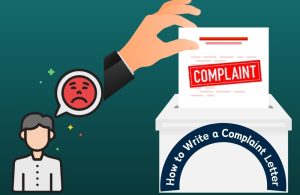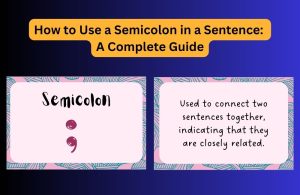This article covers the following areas –
- What Are the Different Parts of an E-mail
- Guide to Writing the E-mail Body
- Sample E-mail to Ask for a Discount
- Top Tips for Writing an E-mail for a Discount
- Final Thoughts
- FAQ: Writing an E-mail for a Discount
The art of communication is critical in every aspect of life, more so in the professional and business world. One commonly used form of communication is email, and when used effectively, it can facilitate various business transactions, such as requesting a discount. So today, in this article, I’ll guide you on how to write a compelling e-mail in English asking for a discount.
To ask for a discount in an e-mail, start with a clear subject line and polite salutation. Introduce yourself in the e-mail body, state your purpose, and explain your reason for the discount request. Highlight potential mutual benefits, maintain a respectful tone, and close with a hopeful statement.
For a more detailed guide on crafting an effective e-mail for a discount, continue reading this article. It breaks down each step, from structuring your e-mail and writing the body to finalizing with a professional signature. Practical tips and examples are also provided to enhance your understanding and application.
Apart from this post, if you are looking for a complete guide to help you master the art of writing clear, compelling, professional, and actionable email messages, Writing Professional Emails: The Step-by-Step Guide (Amazon Link) is the book I would recommend. This book can help you to bolster your professional reputation.
What Are the Different Parts of an E-mail
An e-mail is a powerful tool for communication, particularly in business transactions. It’s critical to grasp its fundamental structure and understand how each part contributes to the overall effectiveness of your message. Knowing the different parts of an e-mail and their purpose can help you craft a well-structured and persuasive e-mail when requesting a discount.
1. Subject Line
The subject line is essentially the headline of your e-mail. It’s the first thing your recipient sees and can significantly influence whether your e-mail gets opened or ignored. A well-crafted subject line is succinct, clear, and gives a hint of what your e-mail is about.
For a discount request, you could consider a subject line like “Request for Discount on Bulk Purchase”. This directly communicates the purpose of your e-mail, grabbing the attention of the recipient, especially if they’re in a position to grant discounts.
2. Salutation
The salutation is your opening greeting. This small part sets the tone of your e-mail and is critical for establishing respect. You should address the recipient by their name if you know it. For instance, “Dear Ms. Smith,”. If the recipient’s name is unknown, use a general salutation like “Dear Sir/Madam,” or “Dear Team,”. The salutation should always end with a comma.
3. Body
The body of your e-mail is where you convey your main message. It is typically divided into three parts: introduction, main content, and conclusion.
In the introduction, briefly introduce yourself and state the purpose of your e-mail. For example, “I am John Doe, the purchasing manager at XYZ Company. We are interested in your products and would like to discuss a possible discount for bulk orders.”
The main content is where you detail your request. Be clear and concise, explaining why you’re asking for the discount and how it might benefit the recipient. For example, “Given the size of our order, we believe a discount could facilitate this large purchase and potentially open opportunities for future orders.”
In the conclusion, summarise your e-mail, express anticipation for a positive response, and thank the recipient for their time. For example, “We look forward to the possibility of this mutually beneficial arrangement. Thank you for considering our request.”
4. Closing
The closing is where you wrap up your e-mail before your signature. A professional closing makes your e-mail appear more polite and respectful. The choice of closing can depend on the tone and nature of your e-mail. Some examples include: “Kind regards,” “Thank you,” “Best regards,” “Sincerely,” etc.
5. Signature
The e-mail signature is where you provide your contact details and professional title, if applicable. This part helps the recipient know who the e-mail is from and how they can get back to you. A typical signature might include your full name, title, company (if applicable), and contact details such as your phone number and e-mail address.
In summary, every part of an e-mail plays a crucial role in delivering your message effectively. You can craft persuasive e-mails that achieve their intended purpose by mastering each component.
Guide to Writing the E-mail Body
The body of your email is where the magic happens; it’s the heart of your message. It needs to convey your request for a discount effectively, with all relevant details packaged clearly and persuasively. This section will guide you on how to craft an impactful e-mail body, breaking down each step and offering detailed examples.
1. Introduction
The introduction of your e-mail should ideally accomplish two things: establish who you are and clearly state the purpose of your e-mail.
Introduce yourself, including your name and your role or affiliation. If you represent a company, mention it. This will give your request more weight. Then, straightforwardly express that you’re interested in their product or service.
Example:
“Dear [Recipient’s Name],
I trust this e-mail finds you in good health. My name is John Doe, and I’m the purchasing manager at XYZ Corporation. We have recently explored your product portfolio and are particularly interested in [Product’s Name].”
2. Explain the Reason for Your Request
After setting the stage with your introduction, it’s time to delve into the crux of the matter – your request for a discount. Provide a solid reason for your request to make it easier for the recipient to understand and consider your request.
You could be asking for a discount due to a bulk purchase, a long-term contract, or even financial constraints. Be transparent about your reasons.
Example:
“We are planning to order a large quantity of [Product’s Name], specifically about [Quantity]. Given the size of this order, we were hoping you could offer us a discount.”
3. Express the Benefits of Your Request
Next, make your request more appealing by highlighting how it could benefit the recipient. This could make your request more persuasive.
Express the potential benefits the recipient could gain from granting your request. It could be more business in the future, a long-term partnership, or even positive word-of-mouth advertising.
Example:
“Our intention is not just for a one-time purchase. We believe that offering a discount could pave the way for a long-term business relationship between our companies, potentially leading to more orders in the future.”
4. Be Polite and Respectful
Maintain a polite and respectful tone throughout your e-mail. Courtesy is key in any form of communication, including when asking for discounts.
Never demand a discount; instead, ask respectfully if it’s possible. Remember that you’re asking for a favor, so politeness can go a long way.
Example:
“Considering the circumstances, we kindly request if you could offer us a discount for this large order. We truly appreciate any consideration you can provide in this matter.”
5. Closing Statement
End your e-mail body on a hopeful and positive note, showing that you anticipate a favorable response.
Thank the recipient for their time and consideration, and express your eagerness to hear from them soon.
Example:
“We sincerely thank you for considering our request and look forward to a favorable response. We are excited about the prospect of doing more business together in the future.”
So, a well-crafted email body can significantly increase the likelihood of obtaining the discount you request. Remember to be clear, polite, and persuasive, and show that your request also considers the recipient’s benefits.
Sample E-mail to Ask for a Discount
Subject: Request for Discount on Bulk Purchase
Dear Ms. Smith,
I trust this e-mail finds you in good health. My name is John Doe, and I am the purchasing manager at XYZ Corporation. We have recently explored your product portfolio and are particularly interested in your line of eco-friendly office supplies.
We are planning a significant overhaul of our office stationery and are considering a large order, specifically around 1000 units of your recycled paper notebooks. Given the size of this order, we were hoping you could consider offering us a discount.
Our intention is not for a one-time purchase. We believe that a favorable discount could pave the way for a long-term business relationship between our companies, potentially leading to more orders in the future. Our corporation always needs quality stationery supplies, and having a trusted supplier like your company would be beneficial.
Considering the circumstances, we kindly request if you could offer us a discount for this large order. We truly appreciate any consideration you can provide in this matter.
We sincerely thank you for considering our request and look forward to a favorable response. We are excited about the prospect of doing more business together in the future.
Best regards,
John Doe
Purchasing Manager, XYZ Corporation
Contact: (123) 456-7890
You may try Fifty Ways to Practice Writing: Tips for ESL/EFL Students (Amazon Link) to practice and improve writing with pen and paper and typing. By applying these methods, you will be able to write more, write faster, and write more correct and more interesting papers and letters.
Top Tips for Writing an E-mail for a Discount
Crafting an effective e-mail to request a discount involves more than just asking. It requires a thoughtful approach considering the recipient’s perspective and a clear message communicating your request respectfully and professionally. Here, we offer essential tips for writing an e-mail asking for a discount, breaking down each one in detail to provide you with a comprehensive guide for your next e-mail.
#1 Be Clear and Concise
The clarity of your message is paramount in business communication. Your recipient should be able to grasp the purpose of your e-mail instantly without sifting through unnecessary details or complex language. Therefore, you need to be concise and direct, explicitly stating your request and providing necessary details like the product of interest, quantity, and reasons for the discount.
For example, instead of a vague message like “We’re thinking about making a large purchase, and we’re curious about any possible discounts…”, a more precise and concise message could be: “We intend to order 200 units of your product X and were hoping you could consider offering a discount due to the bulk nature of this purchase.”
#2 Use a Professional Tone
Maintaining a professional tone in your e-mail is crucial as it reflects your and your organization’s image. Avoid using casual language, slang, or emoticons, which might make your e-mail seem unprofessional. Keep your language formal yet friendly, respectful, and considerate of the recipient’s time and role.
Instead of a casual phrase like “Hey, got any discounts for us?”, a more professional tone could be: “I’m writing to inquire if your company provides any discounts for bulk purchases.”
#3 Be Courteous
Politeness is key in any form of communication, including e-mails. Ensure to use courteous language throughout your e-mail, expressing gratitude and appreciation for the recipient’s time and effort. This can create a positive impression and might increase the likelihood of your request being granted.
For example, instead of ending your e-mail abruptly, a courteous ending could be: “We appreciate your time and consideration regarding our request for a discount. We look forward to hearing from you soon.”Highlight Mutual Benefits
In your discount request, mention the potential advantages for the recipient if they consider your request beneficial. This might make your request more compelling, showing your consideration for a mutually beneficial business relationship.
For instance, you can write: “We believe that offering a discount on this bulk order could pave the way for a steady business relationship, resulting in more orders and business growth in the future.”
Final Thoughts
Mastering the art of writing an e-mail for a discount requires understanding the fundamental elements of a professional e-mail, from the subject line to the signature. The key lies in being clear and concise, maintaining a professional tone, being courteous, and highlighting mutual benefits.
This guide gives you valuable insights and practical examples to craft a compelling discount request e-mail. Remember, each request is a potential opportunity for building stronger business relationships, so ensure every e-mail you send aligns with this goal.
Happy writing!
FAQ: Writing an E-mail for a Discount
Maintain a polite and professional tone. Ensure you express gratitude and acknowledge the value the company provides.
Yes, referencing previous business or loyalty to the company can support your request for a discount.
While you can mention your expectations, leaving it open-ended and allowing the recipient to propose a discount rate is okay.
Be honest and state your reasons clearly, ensuring you remain respectful and understanding of the company’s position.
Absolutely. This can show you’re serious about the transaction and open to negotiation.
Yes, indicating that a discount could lead to further business can be persuasive.
Keep it concise while ensuring you communicate all necessary details. Typically, a few short paragraphs should suffice.
Yes, a gentle follow-up after a week or so is appropriate.
It can be beneficial if you believe it will help, especially if the references are from notable clients or partners.
Yes, always express gratitude, both for their past service and for considering your request.






